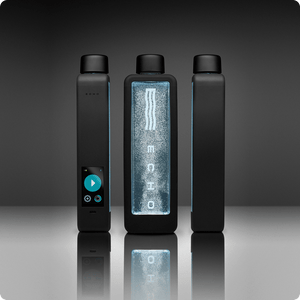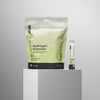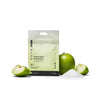There are so many different ways to produce hydrogen enriched water—electrolyzers, hydrogen sticks, hydrogen capsules, magnesium tablets, etc. And every process results in a different amount of hydrogen in your water. Which begs the question, “Do you know how much hydrogen gas is actually in your hydrogen-enriched water?”
Whether you get your hydrogen water from a device, a consumable insert, or a chemical reaction, you know there’s more hydrogen in your water than in normal purified water. But how much? Let’s talk about how hydrogen content in your water is calculated and how that amount affects you.
It’s time to learn about parts per million, or PPM.
What Is PPM?
PPM is a unit that measures the concentration of a substance dissolved in another substance. In the case of hydrogen water, it tells you how many milligrams (mg) of hydrogen gas are dissolved in one liter (L) of water. Since 1 liter of water roughly equals 1 million milligrams, 1 PPM translates to 1 mg/L of hydrogen.
How is PPM measured?
There are a few different ways to measure the PPM of hydrogen in your water. Each method produces varying results based on the pH level, temperature, and purity of the water.
Blue Reagent
This testing method is one you can do at home by adding a solution (blue reagent) to water that contains extra hydrogen. To test the hydrogen content of your water, add a drop of blue reagent to 6 mL of water. If there is dissolved hydrogen gas, the blue reagent will react with the dissolved H2 molecules, causing the blue molecules to turn clear. You continue to add drops until the blue reagent remains blue. That means you’ve reached the titration endpoint.
You can then determine the hydrogen PPM by multiplying the number of drops needed to reach the titration endpoint by 0.1 (or by dividing by 10). For example:
Warning: If your water contains copper (from copper pipes) or chloramine (a disinfectant used to treat drinking water), the blue reagent will not be able to accurately measure the amount of hydrogen in your water.
The accuracy of blue reagent also varies based on the temperature and pH level of the water. For example, if you have more alkaline in your water—a higher pH level—the blue reagent will detect more hydrogen than is actually present and give you an inflated PPM of hydrogen.
If you use blue reagent, be sure you buy it from a trustworthy vendor to ensure it’s been cared for properly and hasn’t been sitting on the shelf for an extended period of time. Mishandling of blue agent can also lead to distorted results.
Digital Electronic Meter
These machines can also be used at home to check the oxidation reduction potential (ORP) of water. Digital electronic meters use an electronic computing unit (ECU) to measure electrons’ movement inside the water. This measurement then determines the ORP of the water. Using the ORP, the digital electronic meter uses an algorithm to get a theoretical number for PPM.
Since the results are theoretical, these machines are a good tool to answer the question: Is extra hydrogen present in my water?
Warning: While digital electronic meters can tell you if extra hydrogen is present in your water, it cannot provide an accurate or exact PPM.
Just like the blue reagent test, the results from the digital electronic meters vary depending on the pH level (alkaline in the water). This is because alkaline also increases ORP.
Since the pH level has such a big impact on these at-home tests, be sure to test your water’s pH level before and after pouring the water into your hydrogen water bottle. Unlike Echo water bottles, some hydrogen water bottles actually increase the pH level of water, which will artificially boost your hydrogen PPM even if your water source doesn’t contain alkaline.
While both of these at-home methods are a great way to show the presence of extra hydrogen in your water, they lack the efficacy needed to show the exact content of hydrogen in hydrogenated water.
Gas Chromatography
Gas Chromatography (GC) is a testing method that can only be performed in a lab by professional chemists. It provides the most accurate and certifiable readings for products that produce water containing molecular hydrogen gas.
The process of GC separates compounds within a mixture, so they can detect and measure the ingredients in the mixture. In this case, the amount of extra hydrogen in water.
This is how Echo measures the PPM for each of our products. We use a third party (H2 Analytics) to provide performance testing and certification to ensure our products produce reliable PPM of hydrogen.
Does PPM matter?
Yes! Depending on the amount of dissolved hydrogen in water, you can experience varied health benefits. Essentially, you want enough PPM of hydrogen in your water to experience positive results.
But hydrogen gas has limited solubility in water. Under normal atmospheric pressure and room temperature, the maximum achievable concentration is around 1.6 PPM. This might seem low, but research suggests it could be significant. Studies have shown that hydrogen-rich water (HRW) with concentrations between 0.5 PPM and 1.6 PPM may offer potential health benefits by combating oxidative stress in the body.
What is the therapeutic amount of hydrogen gas in water?
The generally accepted therapeutic level of molecular hydrogen gas in water is .5 PPM. However, studies suggest that water with hydrogen concentrations below 0.5 PPM might not be sufficient to produce the potential health benefits associated with HRW.
On the other hand, studies have found that consuming HRW with concentrations of 1.2 PPM to 1.6+ PPM can produce observable positive results.
So, how do you know how many PPM of molecular hydrogen is in your hydrogen water? It depends on the production method used to dissolve the hydrogen molecules and storage conditions. Every hydrogen water company does things a little differently, so PPM can vary widely across brands and products.
Echo has been able use advanced technology and processes to reach higher hydrogen PPM in their hydrogen water. Each of their products is clearly labeled with its specific PPM, so you can decide what PPM is best for you.
Why is Echo hydrogen water PPM better?
Echo™ hydrogen water machines have been tested and certified to bring you more than the therapeutic amount of hydrogen gas. Echo uses electrolysis to produce its HRW. In this process, electricity passes through water, splitting H2O molecules into hydrogen gas (H2) and oxygen gas (O2). Once the water molecule is split, hot oxygen is released into the environment, the hydrogen dissolves, and the hydrogen eventually mixes it in with the purified water.
In normal water, any bubbles you see are naturally occurring oxygen molecules from turbulence and normal aeration. But in hydrogen-enriched water, the bubble you see in your water are actually hydrogen gas molecules.
With this process, Echo is able to produce hydrogen-enriched water with 4.5 PPM—much higher than the therapeutic amount. Which means it offers more health benefits like:
- Reduced oxidative stress and inflammation
- Improved gut health
- Increased energy
- Improved brain function
- Lowered athletic fatigue
- Better sleep
- And faster recovery
But with Echo, you also have control over how much hydrogen is in your water. Not everyone needs 4.5 PPM of molecular hydrogen in their water to feel their best. Which is why Echo provides several products and cycle options, so you can choose the hydrogen PPM that’s right for you:
Echo Go Water Bottle (9.5 oz)
- .8 PPM with a 3-minute cycle
- 3.0 PPM with a 10-minute cycle
Echo Go+ Water Bottle (10 oz)
- 2.5 PPM with a 5-minute cycle
- 4.5 PPM with a 10-minute cycle
Echo Water Pitcher (57 oz)
- 1.6 PPM with a 20-minute cycle
Echo Ultimate Hydrogen Water Machine (1,000 gallons)
- 1.6 PPM
Not only do these options allow you to choose the amount of hydrogen that’s best for you, you can also choose how much water you want to make each day.
Another important thing to remember is that hydrogen water loses its potency over time. It has a 3-5 hour half-life, which means it loses half of the original hydrogen gas molecules in 3-5 hours. After 6-8 hours, the hydrogen-enriched water will no longer offer health benefits because the majority of the hydrogen will be depleted.
These numbers are based on you storing your hydrogen water in a sealed container. If you leave the hydrogen water in an open container, the hydrogen molecules will leave the water more quickly.
While the ideal therapeutic amount of hydrogen in water is still debatable, we do know for certain that .5 PPM is the minimum amount needed to offer health benefits to hydrogen-water drinkers. Which is why Echo uses proven and reliable techniques to ensure their products offer enough PPM of hydrogen to improve how your body and brain function.






